Raising chickens comes with its own set of expenses that vary based on several factors. This article will break down the key aspects influencing the cost of chicken ownership, helping you make informed decisions for your poultry venture.
How Much Does It Cost to Raise Chickens?
Raising chickens involves costs that depend on multiple factors. A basic backyard chicken setup can be initiated for under $1,000, or even as low as $500 if you’re budget-conscious. Typically, maintaining a small flock of chickens costs approximately $20 per month following the initial setup phase.
What Determines the Cost of Raising Chickens?
The cost of raising chickens is a multifaceted consideration, influenced by various factors that can significantly impact your budget. Understanding these determinants is crucial for anyone embarking on a poultry venture.
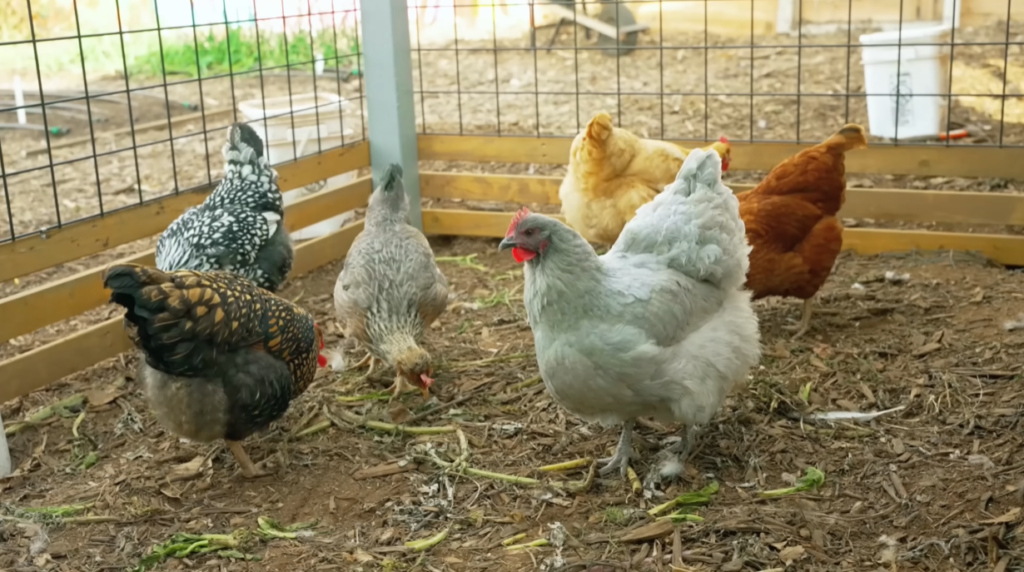
Below are the key elements that shape the cost of raising chickens, from initial setup expenses to ongoing maintenance, and even the breed of chickens you choose.
Initial Setup Costs
One of the fundamental factors determining the cost of raising chickens is the initial setup. This includes the expenses associated with constructing a coop or purchasing a pre-made one, acquiring feeders, waterers, nesting boxes, and other essential equipment.
Additionally, you’ll need to invest in bedding materials and, of course, the chickens themselves. Depending on your choices and the size of your flock, initial setup costs can range from a few hundred to a few thousand dollars.
Housing and Shelter
The type and quality of housing for your chickens can greatly influence costs. Building a custom coop can be costlier than buying a pre-made one, but it allows for greater customization and control over materials.

Additionally, larger coops and runs will require more resources, impacting both initial setup and ongoing expenses. Proper shelter is vital for the health and safety of your chickens, making this a crucial determinant of overall costs.
Choice of Chicken Breed
Different chicken breeds come with varying price tags. Popular breeds known for egg production, like Rhode Island Reds or Leghorns, are generally more affordable to purchase than exotic or rare breeds.
However, if you’re interested in raising chickens for meat, you may choose broiler breeds designed for rapid growth, which can affect both acquisition and feeding costs. Your choice of breed should align with your goals and budget.
Feeding and Nutrition
A significant ongoing expense in chicken keeping is their feed. The type and quality of feed you provide directly affect your chickens’ health and egg production. While basic feed is relatively inexpensive, specialty feeds, organic options, or homemade mixes can increase your monthly expenses.
Moreover, the number of chickens in your flock and their age will dictate how much feed is required, further impacting costs.
Healthcare and Medications
Maintaining the well-being of your chickens is essential. Routine vaccinations, parasite control, and occasional medical treatments are part of responsible chicken ownership. Veterinary care costs can add up, particularly if you encounter health issues within your flock.

Proper preventative care can help reduce these expenses, making it essential to establish a health management plan.
Utilities and Energy Costs
Chickens require a consistent source of clean water and adequate lighting. Heated waterers, especially in colder climates, can contribute to energy bills. Additionally, artificial lighting may be necessary to ensure consistent egg production, further affecting your utility costs. Proper management of these factors can help minimize energy expenses.
Egg Production and Egg Sales
If you’re raising chickens primarily for their eggs, consider the potential income from selling surplus eggs. This can offset some of your chicken-related expenses. However, factors like the number of eggs produced, market demand, and pricing strategies will influence the profitability of this endeavor.
Keep in mind that the income from egg sales may not cover all your expenses but can certainly help.
Maintenance and Repairs
Over time, your chicken coop and equipment may require maintenance or repairs. Weather damage, wear and tear, or necessary upgrades can all incur additional costs. Budgeting for these occasional expenses is important to ensure the longevity and functionality of your chicken setup.

Predator Protection
Protecting your chickens from predators is vital. This can involve the cost of fencing, hardware cloth, or even security systems like motion-activated lights. Investing in reliable predator protection is essential to safeguard your flock, and it’s a cost that shouldn’t be underestimated.
Labor and Time Commitment
While not a direct financial expense, the time and labor you invest in caring for your chickens are valuable resources. Daily tasks such as feeding, egg collection, and cleaning can add up in terms of time commitment.
Consider how your available time may affect your ability to manage a larger flock or more complex setups.
What Are the Cheapest Chicken Breeds for Beginners?
For novice chicken keepers, choosing the right breed is a pivotal decision that can impact the cost-effectiveness of your poultry venture. Some chicken breeds are more budget-friendly and beginner-friendly than others, making them ideal choices for those just starting.

Below are some of the cheapest chicken breeds for beginners, considering factors like purchase price, feed efficiency, and overall ease of care.
Rhode Island Red
The Rhode Island Red is a top pick for beginners on a budget. Known for its hardiness and excellent egg-laying capabilities, this breed is a cost-effective choice. Rhode Island Reds typically require standard poultry feed, making them easy on the wallet when it comes to nutrition.
These birds are not only economical but also low-maintenance and known for their friendly temperament, making them an excellent choice for beginners.
Plymouth Rock (Barred Rock)
Plymouth Rocks, often referred to as Barred Rocks, are another budget-friendly breed for beginners. Their striking black-and-white striped feathers and docile nature make them a popular choice.
They are not picky eaters and can thrive on standard poultry feed, helping you save on feeding costs. With good egg production and adaptability to various climates, Plymouth Rocks offer both affordability and reliability.
Sussex
Sussex chickens are renowned for their thriftiness. They efficiently convert feed into eggs, making them an economical choice for those looking to maximize their investment. These birds are also known for their tolerance to various climates and friendly disposition, making them a practical option for beginners. Sussex chickens can be a cost-effective addition to your flock.
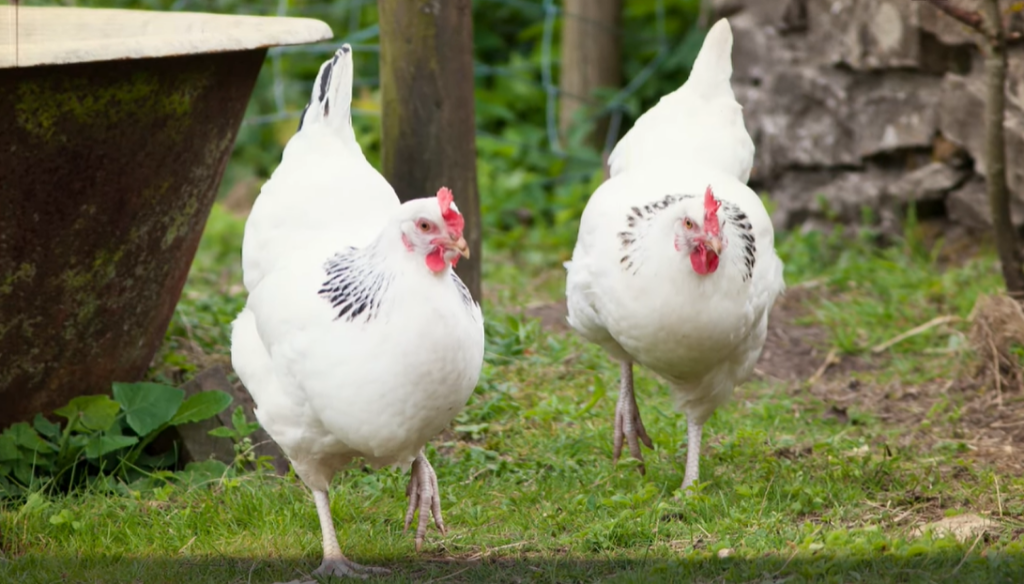
Australorp
The Australorp holds a world record for egg production, laying up to 364 eggs in a year. This high egg-laying capacity makes them a cost-efficient choice for beginners looking to collect fresh eggs regularly.
While their initial purchase price may vary, their exceptional egg-laying abilities can offset the costs over time, making them an excellent investment for those on a budget.
Wyandotte
Wyandottes are an attractive and economical breed suitable for beginners. With their distinctive laced plumage and calm demeanor, they are a favorite among backyard flock owners.
These chickens can adapt to various climates and are not overly demanding when it comes to feed. Their ability to thrive on standard poultry feed and their affordability make them a smart choice for those starting their chicken-keeping journey.
Orpington
Orpingtons are known for their gentle disposition and large size, making them a popular choice for families. Despite their size, they are relatively thrifty when it comes to feeding consumption, and they can efficiently convert it into eggs.
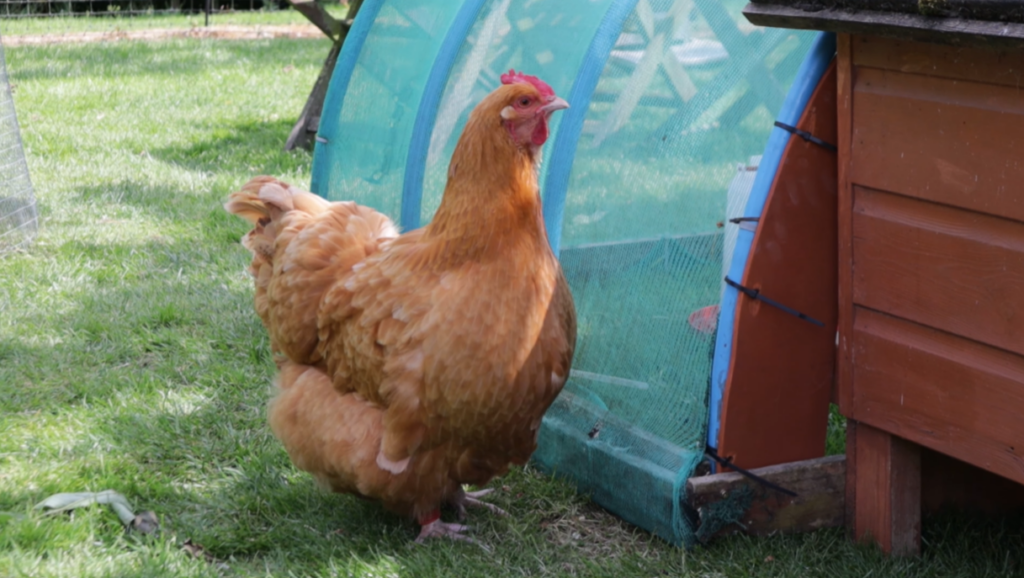
While their initial purchase price might be slightly higher than other breeds, their low ongoing costs and pleasant temperament make them a budget-friendly option in the long run.
Easter Egger
If you’re looking for a touch of color in your flock without breaking the bank, consider Easter Eggers. These chickens are known for their colorful eggs that can range from blue and green to pink and brown.
While they may not be the most prolific egg layers, their quirky egg colors and hardiness can make them a cost-conscious and entertaining addition to your backyard.
How Much Do Chickens Cost?
The initial phase of chicken farming involves acquiring chickens, and there are several routes to consider. One cost-effective approach is to begin with day-old chicks. Raising chicks from a young age can foster a stronger bond between you and your feathered companions, resulting in friendlier and more enjoyable pets.

On the other hand, you might also opt for purchasing older birds, which can be a simpler and budget-friendly alternative. Another avenue is to explore the world of hatching your eggs, offering a unique experience in your poultry venture.
Buying Day Old Chicks
When purchasing chicks, common breeds typically range from $3 to $5 per chick, with rare breeds potentially costing up to $100 each, though such an investment is usually reserved for showing purposes.
However, there are certain considerations when opting for freshly hatched chicks. Firstly, you’ll need patience, as it may take up to six months for them to start laying eggs, during which you’ll be covering their feeding and housing expenses without immediate profit.
Additionally, young chicks demand specific care. For the first six weeks, they require a brooder, with a recommended one-square-foot space per chicken. Brooders can either be bought or crafted from recycled materials like plastic tubs or crates.
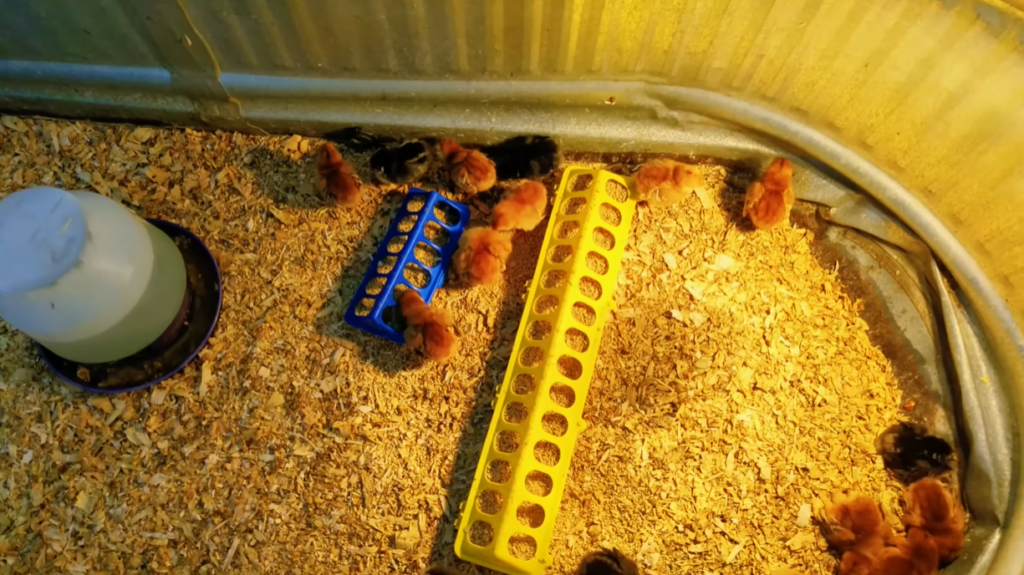
Additionally, you’ll need a heat lamp to maintain warmth in the brooder and coop during their early stages. Lastly, if you’re purchasing chicks, it’s crucial to have them sexed to avoid ending up with roosters instead of hens, ensuring a balanced and functional flock.
Buying Ready-to-Lay Pullets
If you’re eager to have your chickens start laying eggs without the wait, consider investing a bit more in “started pullets,” which are older hens. These pullets can be placed directly in a coop, eliminating the need for a brooder, and they typically begin laying eggs right away.
The cost of individual pullets can vary, generally falling in the range of $20 to $50, depending on their age. Roosters, on the other hand, are more budget-friendly, and it’s often possible to find one for free, especially if you keep an eye out for “free to a good home” ads.
However, there are some drawbacks to pullets. They may not have the same bond with you as chicks raised from a young age, and their level of tameness can vary depending on their upbringing, potentially making them more challenging to manage.
If you opt for adult chickens, it’s essential to source them from a reputable provider to ensure their health and well-being.
Buying Fertilized Eggs
While hatching your eggs may seem thrilling, it’s the least cost-effective way to raise chickens. Fertilized hatching eggs typically range from $1 to $2 per egg, and they require careful incubation and attention to hatch successfully.

Investing in an incubator will set you back at least $100, and you’ll need to allocate time for this involved process. Once the eggs hatch, you’ll also require a brooder and a heat lamp, similar to what you’d need for day-old chicks.
Hatching your chickens can be uncertain since the outcome is unpredictable. Some purchased eggs may not hatch, and you might end up with an abundance of roosters. On the contrary, day-old chicks are a more reliable choice, and the cost difference is minimal.
For beginners in the world of chicken keeping, it’s advisable to steer clear of buying eggs for hatching. It’s a better option to reserve the egg-hatching experience for later, once you have more experience and can enjoy breeding your chickens at no additional cost if that’s your ultimate goal.
How to Save Money on a Chicken Coop?
Building a chicken coop is a significant investment in your poultry venture, but there are several savvy ways to save money without compromising the safety and comfort of your feathered friends. Here are some cost-effective strategies for constructing a chicken coop:

- DIY Construction. Consider building the coop yourself rather than purchasing pre-made ones. With basic carpentry skills and a well-thought-out plan, you can create a functional coop at a fraction of the cost.
- Use Recycled Materials. Look for reclaimed or recycled materials such as wooden pallets, old windows, and leftover lumber from previous projects. These can be repurposed creatively to save on construction costs.
- Optimize Size. Build a coop that suits the size of your flock. An overly spacious coop can lead to unnecessary expenses, both in construction and heating costs. Ensure adequate space per chicken without going overboard.
- Simple Design. Keep the coop design straightforward and functional. Extravagant or elaborate designs can increase material and labor costs. Focus on the essentials, such as insulation and ventilation, to provide a comfortable environment for your chickens.
- Shop for Bargains. Look for discounted or second-hand building supplies at local hardware stores, online marketplaces, or community forums. You can often find deals on roofing materials, hardware, and fencing.
- Repurpose Existing Structures. If you have an old shed or outbuilding on your property, consider converting it into a chicken coop. This can significantly reduce construction costs.
How to Save Money on Chicken Feed?
Feeding your chickens can be a significant ongoing expense, but there are several smart strategies to reduce the cost of chicken feed while still providing your flock with the nutrition they need. Here are some effective ways to save money on chicken feed:
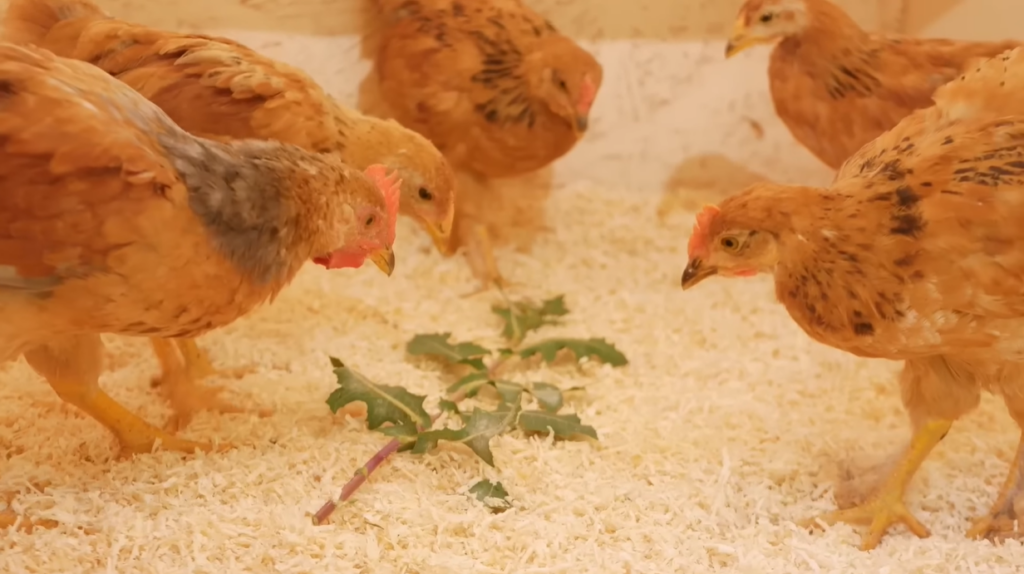
- Mix Your Own Feed. Consider blending your chicken feed by combining grains, seeds, and supplements. Buying these ingredients in bulk can be more cost-effective than pre-made feeds.
- Buy in Bulk. Purchase chicken feed in large quantities to take advantage of bulk discounts. Proper storage in airtight containers will keep the feed fresh.
- Kitchen Scraps. Repurpose kitchen scraps like vegetable peelings, fruit scraps, and leftovers as chicken treats. Ensure these scraps are safe and non-toxic for chickens.
- Local Grains. Source grains and seeds locally, such as corn or barley, to reduce transportation costs and support nearby agriculture.
- Fodder Systems. Grow your chicken fodder, like sprouted grains or grass, which can be an affordable and nutritious addition to their diet.
- Rotate Feeding. Rotate between different types of feed, such as pellets, crumbles, and whole grains, to keep chickens interested and reduce waste [1].
Conclusion
The cost of raising chickens depends on various factors like setup, breed choice, nutrition, healthcare, and maintenance. Balancing these aspects efficiently allows you to manage expenses while enjoying the benefits of poultry ownership.

